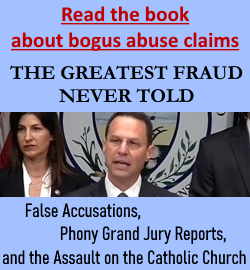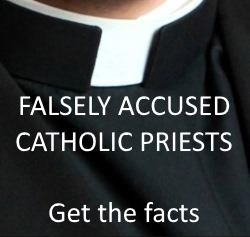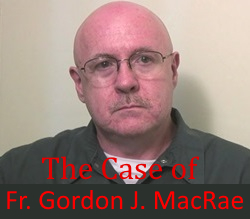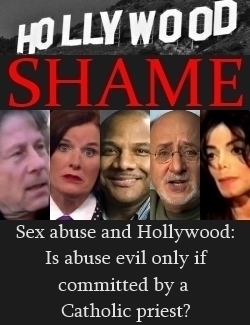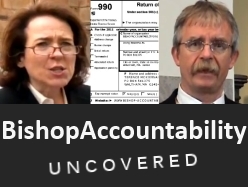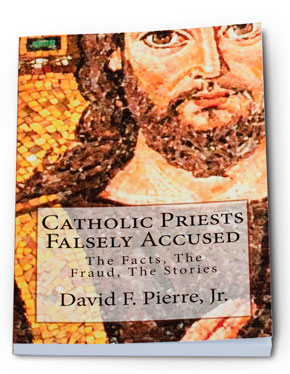In the film director Amy Berg often interviews serial abuser Oliver O’Grady inside a church about his disgraceful crimes. Berg overlays graphic descriptions of stomach-turning abuse with images of the Mass and other Catholic imagery. The motivation behind this is clear. It is a not-so-subtle attempt to forcefully equate the Catholic faith and Catholic priests with the nauseating crime of pedophilia.
Then there’s Berg’s dishonest use of editing. A portion of the film features videotaped depositions of the O’Grady case given by Church officials, including Cardinal Roger Mahony. (Mahony was Bishop of Stockton for a period of time that O’Grady worked there.) A number of lawyers question the Cardinal about the O’Grady case, and Berg craftily cuts off answers, removes sound, and re-frames the screen in order portray Church officials in the worst light imaginable. Anyone who has seen a Michael Moore film should be familiar with these unscrupulous techniques.
For example, Berg features a 1980 letter from the father of an abuse victim written to a Stockton diocese monsignor. When one reads the entire letter (which would be impossible for a viewer in a theater to do), one clearly sees that the major issue of the father’s missive was that O’Grady was spending so much time with his wife. (The man and his wife were separated.) The man was also angry at O’Grady’s dissenting views towards the sacrament of marriage. However, through the use of deceptive framing, Berg craftily highlights a line of the letter in which the father wrote that O’Grady “took our 2-year-old son for a ride.”
“Aha!” the film implies. “Here’s more evidence that they knew that O’Grady targeted children!”
But the contents, tone, and entirety of the actual letter make no such claim or implication. Berg clearly misleads her viewers.
A clear target of Deliver Us From Evil is Los Angeles Cardinal Roger Mahony. While O’Grady served 21 years in the diocese of Stockton, Mahony was the bishop from 1980 to 1985, a fraction of O’Grady time there. Yet the film deceives viewers into believing that just about all of O’Grady’s disgusting abuse happened under his watch. Two of the adult women featured in the film tell harrowing stories of child sex abuse by O’Grady. While the film bends over backwards to connect Mahony to this abuse, a study of their cases reveals that the incidents took place before Mahony even arrived in Stockton.
In another portion of the film, a series of interview subjects air their frustrations that O’Grady was allowed to continue as a priest. Then Berg places an ominous graphic and caption on the screen: “1982: Roger Mahony moves Oliver O’Grady to another parish 52 miles away.” The clear implication is that Mahony “shuffled” the molester O’Grady off to another unsuspecting parish.
Although the film suggests otherwise, the movie fails to note that during Mahony’s entire tenure in Stockton, not a single victim or family member came to him to complain of child abuse by O’Grady.
In fact, the film also fails to disclose that during his tenure in Stockton, then-Bishop Mahony removed the faculties and assignments of two priests who were accused of child abuse. It’s no surprise that director/writer Berg left this out. It would rebut her implication that Mahony let molesters “run wild” in his diocese.
PART I: Serious Problems With Facts
PART III: Even More Factual Errors
